Blog #218 8/15/17
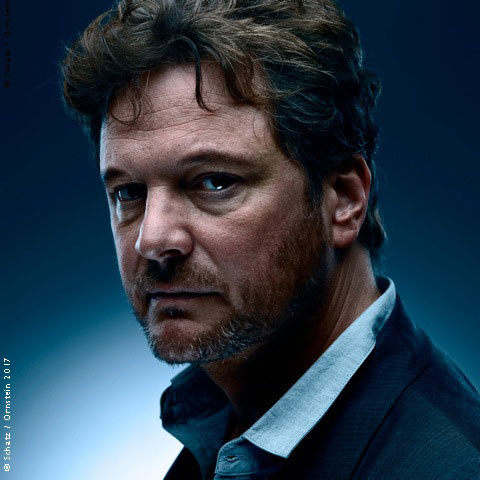
Colin Firth responded like this when I asked him to not communicate anything for the camera.
Any facial expression results from the contraction or relaxation of the many muscles (43 to be exact) under the skin in the face. This flexing and relaxing of the facial muscles, and the resulting “face” that is made, allows feelings to be expressed. The intricate facial musculature has the potential to project thousand’s of feelings, emotional messages. The changes that can occur in one’s face can be infinitely subtle yet at the same time inexpressibly powerful.
That active contraction or relaxation of any combination of facial musculature results in any one person’s desire, conscious or subconscious, to communicate something, an attitude, a feeling, a defense, a message. In the making of a serious portrait, any such effort on the part of the subject to influence the result creates a barrier to truth; a lie is made.
When we make facial expressions, we’re essentially transmitting a packet of information that can be received, read and interpreted by others. We can produce a myriad of variable messages that provide cues to our overall emotional state, our short-term feelings, about our immediate environment, our mental well-being, our personality and mood, our physical health, our credibility and whether or not we view others as being credible.
Often a photographer, with camera and lights at the ready, directs the subject to do something. “Say cheese,” or any one of a thousand possible directions. The subject responds but this response is shaped by the subject’s interpretation of what the photographer meant or by the subject’s determination to project what he wants regardless of the photographer’s direction.
In our contemporary world this response is usually a smile or something similar. The photographer wishes to heighten the energy, brighten up the subject and create something entertaining or fun. The result is a fairy tale, a falsehood; it is anything but the truth.
For the purpose of most “snaps,” that’s OK. People want to “look good” or happy or something that may well be far from what they are actually feeling at the time. The photograph becomes the proverbial “spoonful of sugar” or frosting on a cake, or a perfect tuxedo or beautiful gown. But it does not convey anything significant beyond that.
It is my opinion that if a portrait is to communicate something real, human, truthful, powerful, compelling, if it is to become an image that draws one in to study, wonder and virtually interact, it needs veracity as well as many other things (e,g, pose, lighting, composition, perspective, etc) that work together in a kind of magical harmony.
This entire note regards the making of any portrait for the photographer, for the artist who has something to say, to share with the world. The making of such an image is not for the subject, or anyone else. There is no one else to please with vanity, “looking good,” “fits the message” or for any other purpose. I made the images in this Blog for me.
How to achieve veracity? How to relieve the subject of any responsibility to look or appear a certain way? How to help the subject let go of his normal defensive manner of interest with the world, to let go of his guard? How to do THAT!?!?
One way is to live with the subject for a sufficient amount of time so that he or she is so completely comfortable and trusting that you, the portraitist can become invisible, can be ignored. A number of photographer’s have done just that. Sally Mann with her own family, Diane Arbus with her family of unusuals, Annie Liebovitz, early in her career hanging out and traveling with her musician subjects.
Short of that, what can a photographer do in the limited time allotted for making a portrait? I will discuss a few things that seem to have worked for me: none works every time but one or another does at least most of the time.
A relaxed conversation prior to a photo-shoot helps a lot especially if it is a gentle (not aggressively probing) interview about the subject. The subject might get the idea that I am not about to make them look awful, that I am interested sincerely in learning about them and that I am gentle and easy, not nervous, in a hurry, domineering or unkind.
I tell most subjects that I plan to make a lot of photographs and, like a treasure hunt, am looking for something wonderful. I inform them that there are no mistakes…anything goes, it just may work or not and won’t matter for the single image selected. I explain that no image matters, that except for one all will be thrown out. They are all “rough drafts.”
I avoid using the word “no,” as in “no, don’t do that, or turn to the right not the left, or no, not your hand there,” etc. I try to guide gently in a positive way or say something like, “excellent. Let’s try this….” I want the subject to be free, not frozen.
I sometimes suggest a scenario where the subject is not the center of attention, where they are just one of many in a room and where someone one else is speaking and the subject, just one of many, is just listening.
I might explain that what the person is talking about holds their interest, but the subject matter is neither happy or sad, nor difficult to understand, i.e. no facial response is called for. I will ask the subject to either look at the camera as if that is where the person talking is located or look away. There are many scenarios like this that help the subject imagine himself elsewhere, and away from the world of people for whom they need to be “on guard.”
I fully realize that with busy and very important people there may be hardly any time to do these things. A president or multimillion dollar athlete might “sit” for a minute and then get up and walk out. It is self-defeating of course not to give the portraitist time to do something wonderful and I find it remarkable that occasionally, some actually have made ample time.
When I can manage to guide the subject to let go of every attempt to control and communicate, veracity will permeate the space. Many other things need to work perfectly together, but at least there is a chance of making an original meaningful piece of art.
The following are some successes as well as failures.

The Late Morley Safer: A famous journalist, he understood about “listening.”
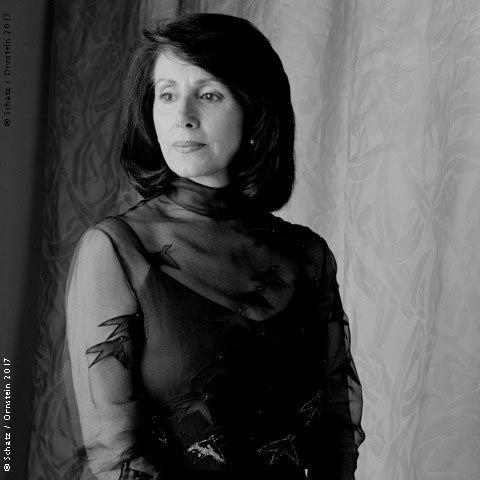
Nancy Pelosi (a photo taken 20 years ago) trusted me to make an image that was not about vanity.
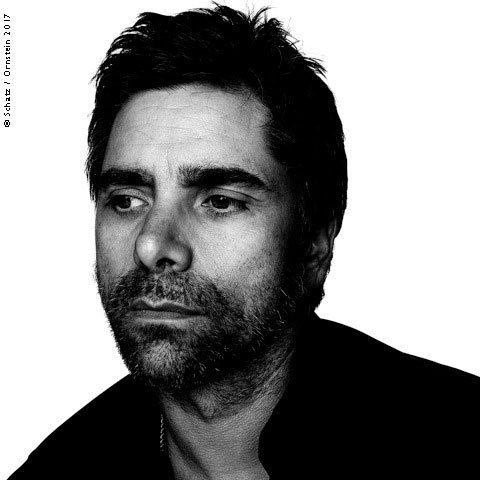
John Stamos; eyes off the camera–in his own place–allows the viewer to wonder about him. It is always worth asking the subject to look away from the camera–you never know what might happen.

John Slattery, as himself, out of his “Mad Men” character.

Amy Poehler; She came to the studio for a Vanity Fair “IN CHARACTER” photo shoot. She was delightful, a dream to work with. When it was time to make her portrait I could not get her to stop “performing.” She understood fully about veracity but refused to let me really see……This image was my default. It happens, sometimes. I know it is sweet, pretty and delightful. But I was after truth.
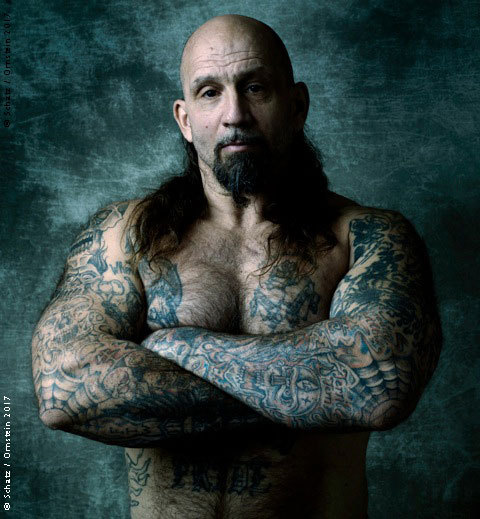
With this prisoner, I couldn’t find a way to get him to shed his attitude which almost certainly comes from his need to survive the life he’s living. I have no idea what is under this facial projection, who he really is. He let me know with certainty that he was not someone to be taken lightly. Subjects will often use a gesture, but a gesture is a singular communication. Sometimes there is a minuscule of truth, often not. Gesture (the subject of an upcoming Blog) is NOT veracity.

Another prisoner, determined to pose. Is this the “truth”? Sometimes it’s tough to know, especially when the photo session is short and the circumstances are hard to control.
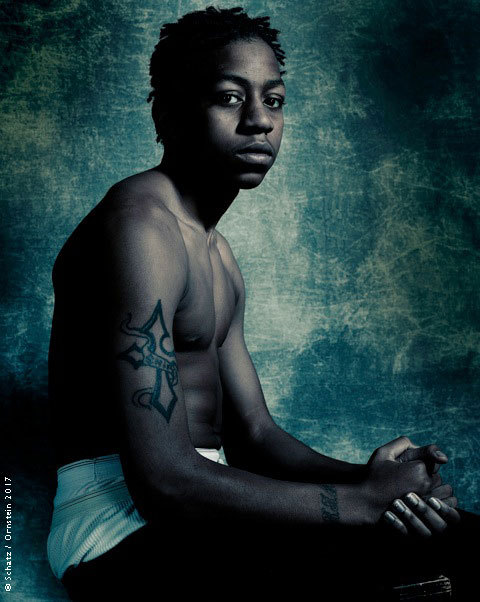
Whereas for this young prisoner, far less guarded, this portrait seems to bring so many questions and ideas to mind–which is one of the “goals” of attempting to make an image that has veracity.

Homeless, vulnerable—there has been so much living and life that have made this person who he is, clearly shown for the camera.

This homeless couple makes one look, wonder and think, “What have they lived? How do they survive?” I happen to know from the interview that he offered her to strangers in exchange for drug money.

The actor Sean Hayes, shedding his comic persona.

Ricky Gervais, not as we are accustomed to see him.

Mario Cantone, again, out of character; himself.

Michael Cerveris, a transformation brought by asking the subject to look away from the camera and imagine an “out of studio” scenario where he is not the center of attention.

Michael Emerson

Ian McShane: I think each image has veracity, i.e. is “truthful.” The difference
among them is simply the lighting. There is much to “read” in his wonderful face.

James Remar; not acting – a lifetime of experience becomes manifest in his face.

Michael Imperioli, leaving his Sopranos persona behind.

Michael McKean, also dropping his usual comedic characters.

Ruben. I will discuss children in another Blog but suffice it to say—
they have not lived much of a life, yet, so, there is only a little to “read” on their faces.

Models do not make their livings by showing a lot of information about their inner lives, so finding any particular truth about them can be rather difficult.

And finally, Melissa Leo, one of the great actresses of our time, allowing me to really see.